When planning to purchase a dishwasher, many people want to know how this technique works and how it works. The principle of operation is very simple - washing is carried out by spraying water with a detergent dissolved in it. But the device of the dishwasher remains a mystery to most consumers. In this article, we will open the veil of secrecy for you and tell you what modern dishwashers consist of.
Main dishwasher
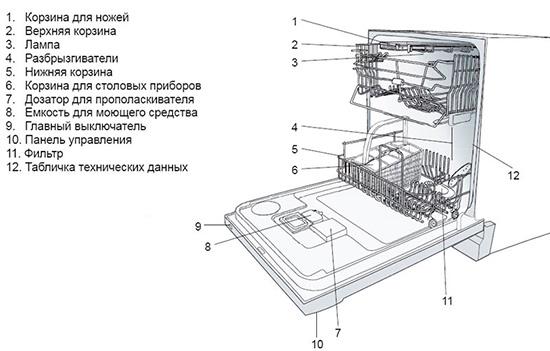
If you want to know how it works dishwasher indesit, Bosch, Electrolux or dishwasher from any other brand, be sure to read the material to the end. Let's start with the most important thing - apparatus heart. It is a powerful motor, sometimes referred to as a circulation pump.. He drives water with detergent or rinse aid in a circle, taking it from the working chamber and returning it through the rocker arms. As for the rocker arms, they serve as rotating spray nozzles.
The largest element in the dishwasher is the working chamber. It is in it that the rocker arms are located, which play the role of washing elements. There are also baskets where dishes are laid.Baskets can be adjusted in height, and some manufacturers endow them with a transforming design, which makes it easier to lay kitchen utensils of non-standard sizes.
This is followed by a bunch of the following elements:
- Filter - provides filtration and removal of solid contaminants (food residues);
- Drain pump (aka drain pump) - removes dirty water outside the dishwasher;
- Drain hose - its purpose is clear without any comment;
- Aquastop - it is not present in all dishwashers, but it allows you to protect yourself from leaks. The executive element of this unit is a solenoid valve located at the very end of the inlet hose.
Also in the device of any dishwasher there is the following bundle:
- Inlet hose - it is connected to the water supply, cold water enters the device through it (or hot, if someone connected the equipment to the hot water pipe);
- Solenoid valve - participates in the filling of water, blocking or opening its supply;
- Water heater - classic or flowing. The latter helps shorten cycle times by heating water instantly rather than gradually.
note that in front of the inlet hose there is a simple coarse filter in the form of a metal mesh. It plays an important role in the design of a household dishwasher, filtering out large contaminants that can enter the dishwasher from the water pipe.
As we can see, the device of dishwashers is extremely difficult.And all this despite the fact that we have not yet touched on a number of important organs, nodes and systems. The ion exchanger is a very important part responsible for water softening.. The thing is that salts dissolved in hard water interfere with normal washing. The exchanger, based on a special ion-exchange resin, allows you to replace magnesium and calcium ions with sodium ions, as a result of which the water becomes softer.
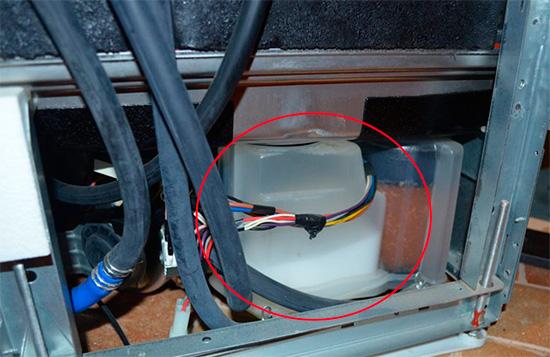
In conjunction with the ion exchanger, a container is installed into which salt or salt substitutes – they help to restore the amount of sodium ions in the ion exchange resin. Salt is taken from here automatically, its amount depends on the settings set in the dishwasher. The container holds approximately 1 kg of special salt for dishwashers.
In addition to all this, dishwashers have pressure switches (water level sensors), thermostats (determine the temperature of the washing mixture), various sensor sensors (in machines with automatic programs). Water inlets are also installed here to collect water, there are numerous connecting hoses and clamps. The whole thing is wrapped in a case with effective sound insulation.
We forgot to mention the most important detail in the interior of any dishwasher - this control board, which is the "brain" for the entire filling. It is from it that the wires to the sensors and various electrical modules diverge. In conjunction with the board, a control module operates, on which knobs, buttons, indicators and other elements are located.
As for detergents and rinse aids, they are loaded into special dispensers - most often they are located in the loading doors. Tablet preparations of the All-in-One format are also placed here, containing all the necessary chemistry.
Differences in the device for different models
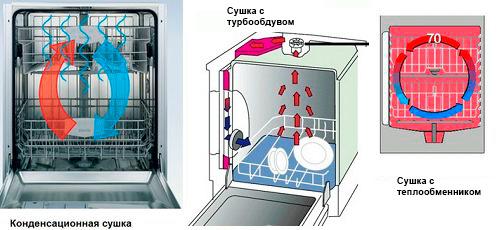
Understanding the question of how the dishwasher works, it should be noted that some models have a slightly different device. As technology develops, technology gets more and more new opportunities. They allow:
- Significantly improve the quality of washing dishes;
- Reduce the amount of detergents used;
- Reduce program execution time;
- Create conditions for gentle washing of “delicate” dishes;
- Give dishwashers new useful features and options;
- Almost completely automate the washing process.
To do this, new modules are added to the dishwasher device.
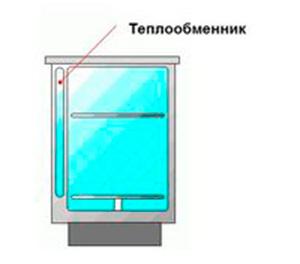
For example, heat exchangers are found in Bosch dishwashers. They are filled with water and allow you to create ideal conditions for washing thin-walled dishes - due to their high heat capacity, they prevent temperature fluctuations in the working chamber. From the outside, the heat exchangers are not visible, as they are installed inside dishwashers.
Dishwasher Electrolux ESF 9420 LOW is equipped with a turbo dryer, so its design is somewhat different from other units. If we disassemble the device and examine its internal “guts”, we will find an additional heating element and a fan - this bundle creates a stream of hot air that enters the working space and dries the dishes placed there.
Also in the internal structure of some dishwashers there are sensors for determining the hardness of water. They work in automatic mode, independently dosing the consumption of salt. As a rule, only the most expensive models are endowed with such functionality - these are Asko B 5869 XL (costs from 129 thousand rubles), Miele G 6200 SC (from 89 thousand rubles), Zigmund & Shtain DW69.6009X (surprisingly inexpensive device, its the price is from 36 thousand rubles).
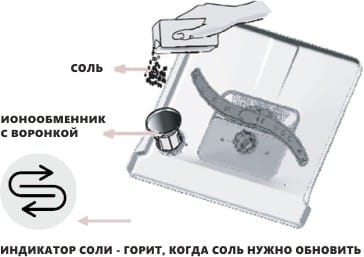
Rinse aid and salt sensors - they are located in the respective compartments and are connected to the control board. As soon as they detect the lack of drugs, the corresponding indicator on the control panel will light up. Moreover, the presence of detergent is not controlled in any way - the dishwasher can easily start empty.
The water purity sensor is not found in all dishwashers, but only in some. In their device, we will see a special optical sensor that evaluates the transparency of water when rinsing. As soon as the amount of dirt is reduced to a minimum, the sensor will indicate the end of the rinse.Thus, it guarantees the impeccable cleanliness of your dishes (we do not take into account accidental misfires as washing).
The last element, available in a limited number of dishwashers, is the "beam on the floor" indicator.It allows you to evaluate at what stage the PM is at the moment - in working or standby mode (usually the beam changes its color). In some models, the beam is replaced by a time projector - the time remaining until the end of a given cycle is displayed on the floor.
